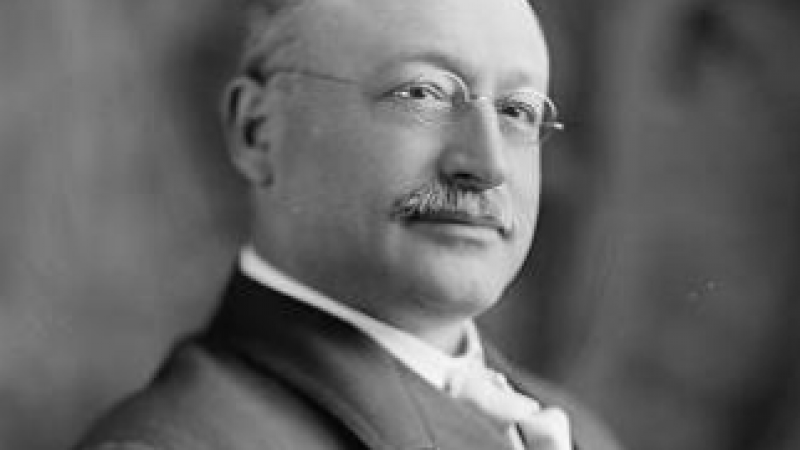By Gregg Hoffmann
For Battlegroundwis2020.com
Socialism can be a lightning rod in modern politics. Bernie Sanders has described himself as a “democratic socialist.” And President Trump has declared America will never become a socialist country under his watch.
Milwaukee, the host city of the DNC Convention in 2020, has a deep history of socialism in its politics. For more than 60 years, the American socialist movement played a big role in Milwaukee, which counts a congressman and several mayors as prominent socialists. Rep. Victor Berger in 1910 became the first member of Congress elected on the Socialist Party ticket. And starting with Emil Seidel in 1910, Milwaukee had three Socialist Party mayors.
Milwaukee hosted Socialist Party of America national conventions in 1932 and 1942; nearby Kenosha hosted a party convention in 1938.
The movement grew out of a period in the late 1890s when there was labor unrest and corruption in Milwaukee. The Turners, who had roots in some German progressive thinking, pushed for reforms. Other groups also lobbied for workers’ rights and better government.
Berger evolved into one of the early leaders of the socialist movement in Milwaukee and has been dubbed the “Moses” of Milwaukee socialism.
Berger, a member of the Turners organization, pushed for promoting socialism at the polls. He used his newspapers, the Milwaukee Leader and Forward and the “Bundle Brigade,” a group of volunteers distributing leaflets, to spread the word. Berger was elected to Congress in 1910.
The socialists pushed for better infrastructure and public works projects. That led to the term “sewer socialism” for the socialist movement in Milwaukee. The term was coined by Morris Hillquit at the 1932 Milwaukee convention of the Socialist Party of America as a commentary on the Milwaukee socialists and their perpetual boasting about the excellent public sewer system in the city.
Seidel was elected the first socialist mayor in Milwaukee, and the nation, in 1910. Twenty-one aldermen, 10 county supervisors and two judges also were elected that year as Socialists.
Seidel was credited with increasing the minimum wage to $2 per day, instituting the eight-hour workday in Milwaukee and starting a county parks system that was considered one of the premier systems in the country.
Daniel Hoan was elected mayor on the socialist ticket in 1916 and served 24 years in the post. He is credited with establishing the first public housing project in the country and the first public transportation system.
Hoan also was heralded for blocking the attempt by the Ku Klux Klan to rally in Milwaukee in the 1920s.
Democrat Carl F. Zeidler became Milwaukee’s 33rd mayor in April 1940, when he defeated Hoan. But In April 1942, Zeidler left office to enter the Navy and in November 1942, the merchant ship La Salle, on which he commanded a gunnery crew, was torpedoed off Cape Town, South Africa, with the loss of all hands. Zeidler was 34.
His brother, Frank Zeidler, was elected mayor as a socialist in 1948. He served until 1960, the last socialist to run a major American city. He was known as an advocate for urban renewal, which included a highway system and other institutions that still exist today.
Zeidler helped renew interest in socialism nationwide and was the party’s presidential candidate in 1976. He received 6,000 votes.
Museums, the lakefront park system and many other institutions today in Milwaukee have their roots during the socialism era of governance. Time Magazine declared Milwaukee one of the best-run cities in America during the socialists’ time in power.
But socialism did cause some controversy, even during its heyday in Milwaukee. Berger was indicted under the Espionage Act for his opposition to WWI and could not take his seat in the Senate in 1918.
That conviction was overturned in 1922, and Berger went on to serve three successive terms.
Frank Zeidler’s urban renewal effort also displaced entire neighborhoods and had a disproportionate effect on African Americans. That led to inadequate housing in some inner-city neighborhoods, which spurred the fair housing marches of the 1960s.
Conservative political parties also opposed the use of tax dollars and borrowing for some of the public improvements and projects done under the Socialist Democrats.
Overall, the results of “sewer socialism,’’ which focused on improving infrastructure to help people and businesses, are a reminder of the party’s influence on Milwaukee’s culture and institutions.
Frank Zeidler saw public housing as a big priority not just to help the poor but also working-class people, according to Joel Rast, an associate professor of political science at UWM and director of urban studies in the College of Letters & Science.
The view stemmed from a housing shortage after World War II similar to those that other cities experienced around the country.
“So what Zeidler thought was let’s build public housing, because the private market is not supplying enough housing,” said Rast.
“So it’s this notion of government being this legitimate force in society to step in where the market fails and do the job in place of the private sector,” Rast said. “It’s very similar to what Bernie Sanders is arguing.”
See more on Milwaukee’s Socialist history here.



